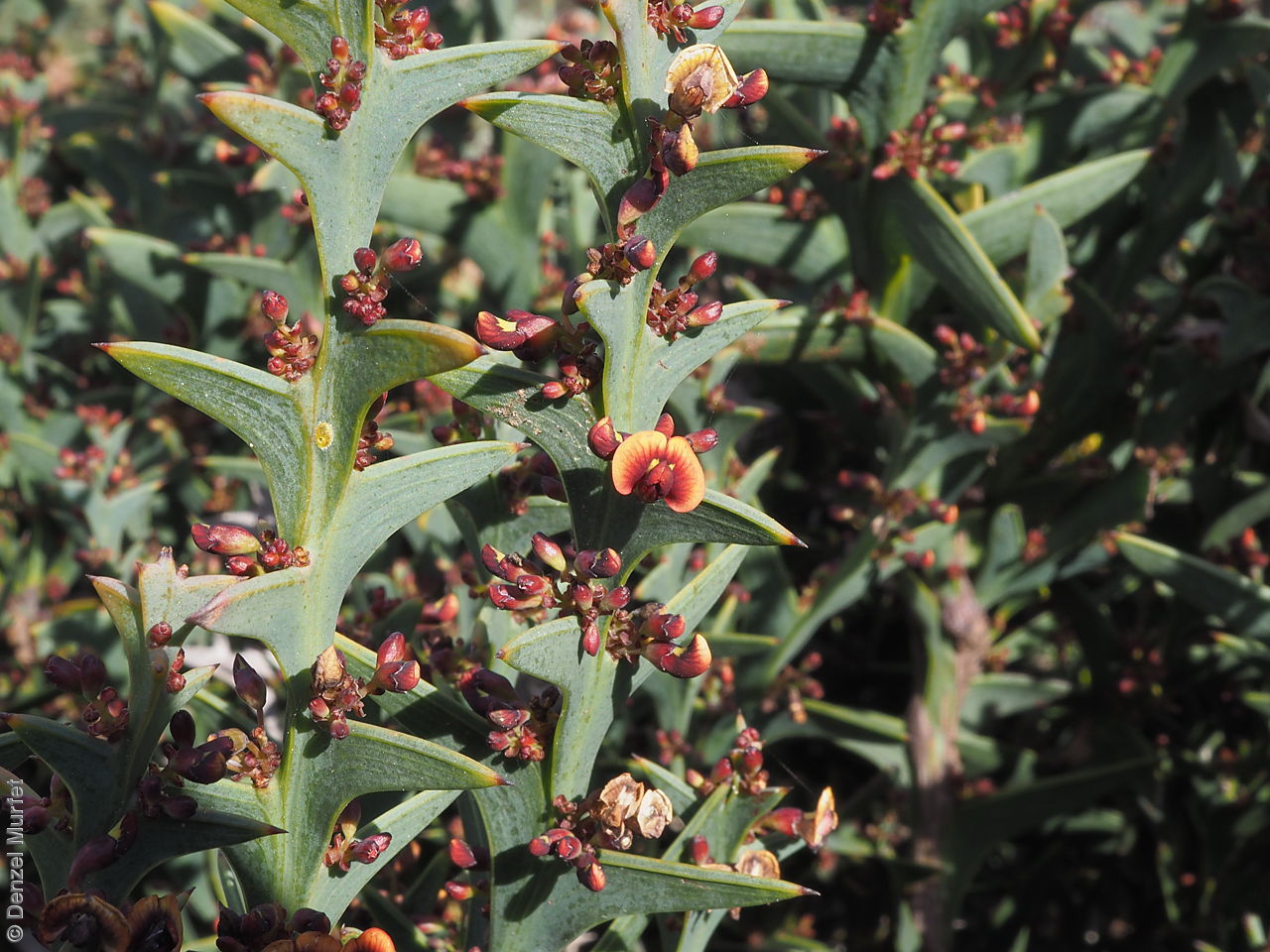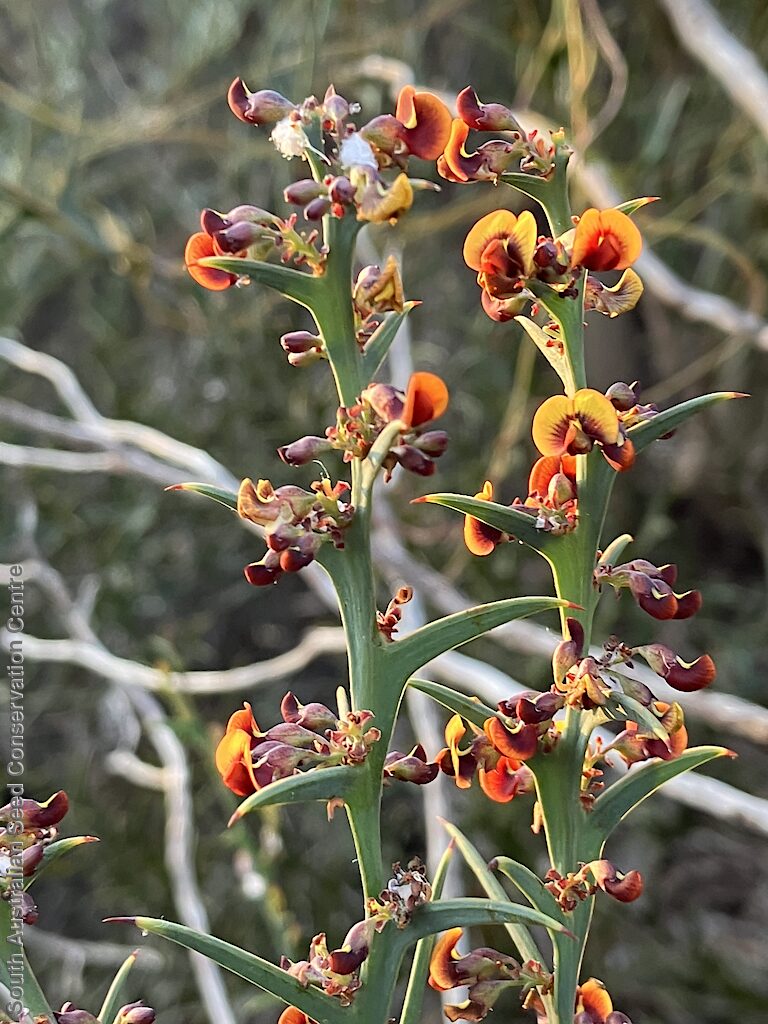



















Botanical art
Prior names
Daviesia latipes
Common names
Barbed-wire Bitter-pea
Zig-zag Bitter-pea
Etymology
Daviesia named after the Rev. Hugh Davies (1739-1821), a Welsh botanist and an Anglican clergyman. Pectinata from the Latin 'pectina' meaning a comb, referring to the comb-like teeth of the phyllode.
Distribution and status
Found on southern Eyre Peninsula, southern Mount Lofty Ranges, with a record near Bordertown in the South-East, growing in mallee scrublands and woodlands on dry stony or sandy soils. Also found in Victoria. Native. Rare in South Australia. Rare in Victoria.
Herbarium regions: Eyre Peninsula, Southern Lofty, South Eastern
AVH map: SA distribution map (external link)
Plant description
Rigid shrub to 1.5 m high, branches glabrous, very prominently angled by the decurrent bases of the phyllodes. Phyllodes flattened laterally into a vertical blade, lanceolate or linear-lanceolate to 5 cm long, tapering into a pungent point, adnate to the stem by the 3-10 mm long-decurrent base, the lower ones longer than the upper ones, divaricate and straight or falcate, very rigid, grey-green. Flowers in dense axillary clusters with orange and a reddish-centred pea-flowers. Flowering between September and November. Fruits are dark brown, flat triangular pod to 14 mm long and wide, with one seed inside. Seeds are brown with black mottled reniform seed to 4 mm long and 2 mm wide, and a cream aril. Seed embryo type is bent.
Seed collection and propagation
Collect seeds between November and January. Collect maturing brown seed pods from the plant using secateurs or by hand. Plant is prickly so it is advisable to wear gloves. Leave the pods in a paper bag to dry for at least a week. Rub the pods gently with a rubber bung to dislodge the seeds. Use a sieve to separate the seeds from unwanted material. Store the dried fruit heads with a desiccant such as dried silica beads or dry rice, in an air tight container in a cool and dry place. From two collections, the seed viability was average to high, ranging from 65% to 100%. This species has physical dormancy that needs to be overcome for the seed to germinate (e.g. nicking or softening the seed coat).
| Location | No. of seeds (weight grams) | Number of plants | Date collected | Collection number Collection location | Date stored | % Viability | Storage temperature |
|---|---|---|---|---|---|---|---|
| BGA MSB | 1,500 (7.9 g) 1,500 (7.9 g) | 13 | 7-Dec-2004 | DJD72 Eyre Peninsula | 31-Mar-2006 | 100% | -18°C |
| BGA | 3,700 (35.46 g) | 4 | 20-Nov-2007 | TST236 Eyre Peninsula | 19-Sep-2008 | 65% | -18°C |
| BGA | 2,150 (19 g) | 4-Dec-2008 | DJD1415 Southern Lofty | 1-Jan-2016 | 95% | -18°C | |
| BGA | 2,515 (23.873 g) | 6 | 15-Dec-2022 | BKB159 Eyre Peninsula | 20-Jun-2023 | 100% | -18°C |
Number of plants: This is the number of plants from which the seeds were collected.
Collection location: The Herbarium of South Australia's region name.
% Viability: Percentage of filled healthy seeds determined by a cut test or x-ray.